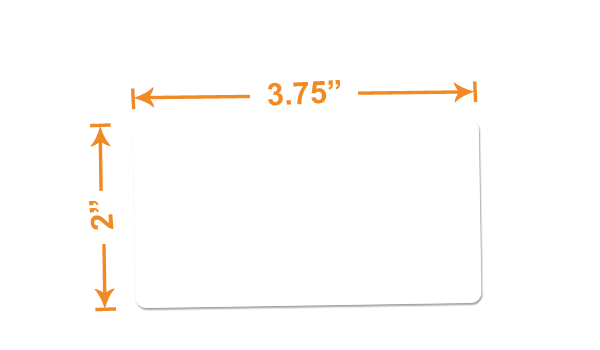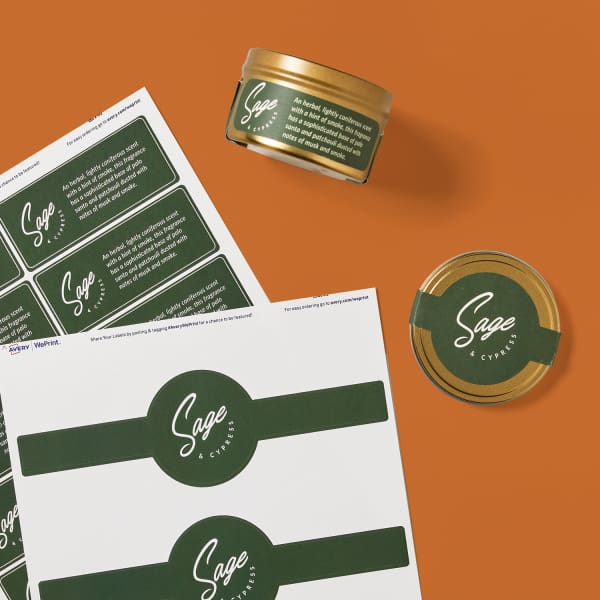Comprehending Just How Blank Labels Work to Boost Your Labeling Experience
Understanding the mechanics of blank labels is necessary for maximizing your labeling practices across various contexts. To completely comprehend just how these labels can change your procedures, one have to consider the different types available and the myriad ways they can be personalized to fit particular requirements.

Benefits of Utilizing Blank Labels
Blank labels supply a flexible solution for different labeling requirements, making them important in both individual and professional setups. Their adaptability permits users to create customized labels customized to specific demands, boosting organizational performance. Whether utilized in office, retail environments, or industrial applications, blank labels promote the identification and classification of items, documents, and individual things.
One considerable advantage of blank labels is their cost-effectiveness. By permitting users to print only the labels they need, waste is lessened, and supply management becomes much more workable. Furthermore, blank labels work with numerous printing methods, including inkjet and laser printers, making them available for different individuals.

One more advantage is the capability to develop unique labels that show branding or personal design. Users can include logos, photos, and color systems, guaranteeing that labels are not just practical yet likewise aesthetically attractive - Blank Labels. This is specifically helpful for companies aiming to enhance their brand name identity
Additionally, making use of blank labels simplifies the procedure of updating details, as users can quickly publish new labels to change outdated ones, making sure that all products and files are properly labeled. Generally, blank labels provide a useful and reliable labeling solution for diverse applications.
Kinds Of Blank Labels Available
What options are offered when it pertains to blank labels? Blank labels come in a range of kinds, each matched for various applications and preferences. The most common types consist of paper labels, which are versatile and economical, making them suitable for day-to-day usage. They are readily available in numerous coatings, such as matte and shiny, enabling aesthetic adaptability.
One more prominent choice is artificial labels, usually made from materials like polyester or vinyl. These labels are known for their resilience and resistance to water, chemicals, and tearing, making them appropriate for extreme atmospheres. They are frequently made use of in commercial setups or for labeling items that may be subjected to wetness.
Furthermore, there are thermal transfer labels, which require a printer that uses heat to transfer ink onto the tag surface area. These labels are preferred for their top notch print and long life.
Finally, specialized labels cater to particular needs, such as detachable labels for short-lived usage or high-temperature labels for extreme conditions. Understanding these options permits customers to choose the most appropriate blank tag for their one-of-a-kind labeling demands.
Personalization Options for Labels
A broad array of modification alternatives is offered for labels, allowing users to customize them to particular needs and branding needs. Individuals can select from numerous dimensions, shapes, and products to make like this certain that the labels effectively fit their desired function. Common products include paper, polyester, and plastic, each using different degrees of sturdiness and aesthetic allure.
Color alternatives play an important role in modification, allowing brand names to preserve uniformity with their business identification. Individuals can pick from a spectrum of shades or even select customized printing to match details branding aspects. In addition, labels can be printed with one-of-a-kind designs, logo designs, and message, improving brand read this name recognition and aesthetic influence.
One more vital aspect is the option of adhesive. Tags can be developed with irreversible, removable, or repositionable adhesives, relying on the application requirements. This versatility permits effective labeling options throughout various atmospheres, from retail to commercial setups.

Tips for Effective Labeling
Effective labeling goes past modification; it likewise includes tactical factors to consider that improve functionality and interaction. To accomplish reliable labeling, start by clearly specifying the objective of each label.
Following, focus on visibility by choosing suitable shades and fonts. High comparison between message and history improves readability, while bigger font styles promote quick recognition. Additionally, make certain that labels are positioned in a regular and logical way, making it simpler for customers to locate and translate details.
Think about the durability of labels also. Pick materials fit for the specific atmosphere where the labels will certainly be made use of, whether it be indoors or outdoors. Water resistant or tear-resistant alternatives may be required relying on the context.
Lastly, on a regular basis review and update your labels to show any kind of modifications in details or usage. This proactive method not just keeps clarity however likewise stays clear of confusion over time. By complying with these ideas, you can make the most of the efficiency of your labeling initiatives, guaranteeing they offer their desired objective successfully.
Applications of Blank Labels
Blank labels offer special info numerous applications across various markets, making them an indispensable device for company and communication. These flexible labels are frequently utilized in storehouses for stock administration, enabling companies to quickly identify and track products. By using blank labels to storage bins, racks, or pallets, firms can enhance their procedures and decrease the possibility of errors.
In the healthcare field, blank labels play a crucial role in classifying drugs and medical materials, ensuring proper recognition and usage. Customizable labels can consist of crucial details such as dosage, expiration days, and individual details, enhancing safety and security and compliance.
In retail, blank labels assist in rates products, providing promos, or identifying shelf areas, which eventually enhances the consumer experience. They permit quick updates to prices or product details without the requirement for pre-printed labels.
Furthermore, blank labels are beneficial for individual use, such as arranging office, crafting, or labeling food containers. Their flexibility allows people to produce customized services that meet certain needs. On the whole, the applications of blank labels are substantial, underscoring their relevance in promoting performance and clearness in numerous settings.
Verdict
In verdict, blank labels offer a versatile and efficient option for numerous identifying requirements. Eventually, the combination of blank labels right into functional processes adds to enhanced performance, making them an important source for both personal and professional use.